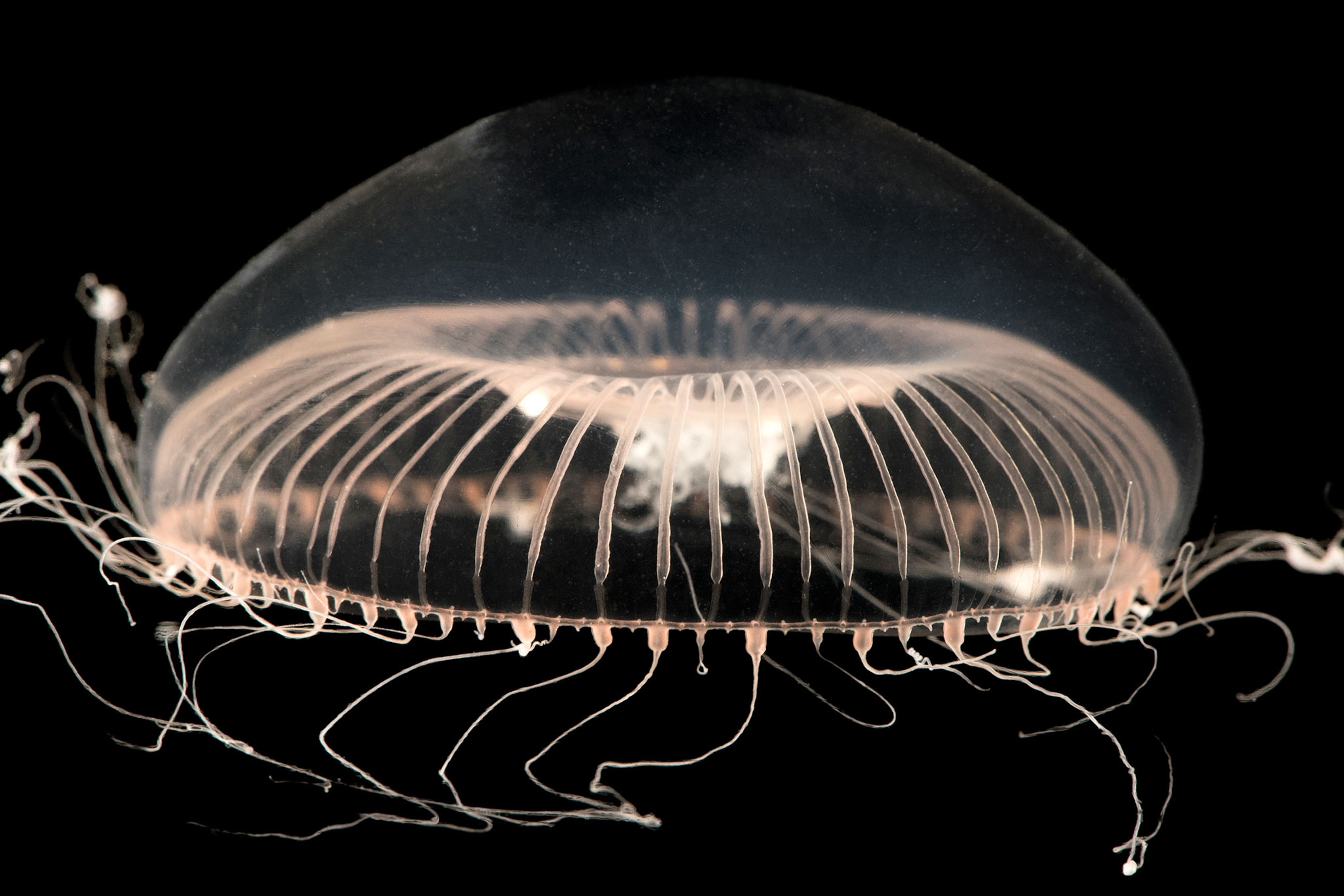
How Jellyfish Rule the Seas Without a Brain
They have no brain and are mostly water, yet jellies have plenty of superpowers.
When we think of dangerous animals, a bag of water without a brain may not seem like it should be on the list. But if ocean bathers hear “jellyfish!” they’ll stand at attention like meerkats, because jellies can pack a wallop.
Often gorgeous and often dangerous, jellyfish are a slippery mass of contradictions. Before the summer fades, we take a look at their squishy superpowers.
Some Jellyfish Are 98 Percent Water
The main body of a jellyfish—its bell—is made of two thin layers of cells with non-living, watery material in between, says jellyfish biologist Lucas Brotz, a postdoctoral research fellow at the University of British Columbia in Vancouver.
This simple structure is a “neat evolutionary trick,” he says, that lets them grow big and eat more things without the cost of a high metabolism.
("Immortal" Jellyfish Swarm World's Oceans)
“They’ve survived every mass extinction,” Brotz says. While most species that ever lived have gone extinct, “this group of bags of water that have somehow survived,” for over 600 million years.
... And Superfast
A jellyfish sting is “one of the fastest processes in biology,” says Sean Colin, a ecologist at Roger Williams University in Rhode Island. It’s also pretty complicated for what seems like a simple animal.
(Pictures: Billions of Blue Jellyfish Wash Up on American Beaches)

The stinging cells of a jellyfish are called cnidocytes, a singular feature of jellies and their relatives such as corals and sea anemones. Inside these cells are an organelle called the nematocyst, which contains what Colin describes as a capsule with little harpoons coiled up inside.
(What's Giving Some Beachgoers Rashes? Get the Facts)
When triggered to strike, hundreds of those nematocysts pop out. That pressure release makes for superfast jabs, lasting just 700 nanoseconds, with enough force to crack a crustacean shell at its weakest point.
They Don’t Mean To Sting You
Nematocysts are activated just by brushing against any organic matter, including us.
Stings of some jellies, such as box jellyfish of northern Australia and the Indo-Pacific, can be lethal, while others have nematocysts that don’t penetrate human skin.
Jellyfish do not, however, sting each other. Brotz says chemical cues likely guard against that. (Related: Like ‘Deadpool, ‘This Jellyfish Has Amazing Superpowers.)
Jellyfish Farmers
Not all jellyfish float with their bells on top. Upside-down jellies flip over and live on the seafloor in tropical waters of the Indo-Pacific, Florida, the Caribbean, and Hawaii.
(These jellyfish can sting without touching you, thanks to 'mucus grenades')
These jellies lay with their bell on the ocean floor like a vacationer catching some rays, which is kind of what they’re doing. They keep microscopic algae in their tissues and “hold them up to the sun to give them a place to grow,” Brotz says, then use them as a source of nutrition.
Golden jellies in Palau’s Jellyfish Lake farm algae too, following the sun as it travels from one side of the lake to the other during the day and fertilizing their ‘crop’ at night, Brotz says. (Related: The Famous Jellyfish Lake is Running Out of Jellyfish)

Jellyfish Indirectly Win Nobel Prize
Many of the 3,000 species of jellies identified so far, Brotz notes, are bioluminescent, meaning that they can make their own light. An important part of this trick used by one species, the crystal jellyfish, is a gene called green fluorescent protein or GFP, says Brotz.
When used by scientists as a biomarker, this protein literally sheds light on the inner workings of the body, tracking processes from insulin production to HIV infection to muscle structure.
The researchers who developed this technology won the Nobel Prize for Chemistry in 2008—riding the tentacles of a jelly.
(Living Fish Found Inside Jellyfish in Bizarre Underwater Scene)
They’re Dangerous Even If They’re Dead
A jelly's stinging nematocysts are like that horror movie maniac who just doesn’t quit. You can get stung by a detached tentacle, or even by a dead jelly.
And if you eat a squid that ate a jelly but didn’t fully digest it, that jelly could sting you, too, Colin says.
Did anyone else just become vegetarian?





